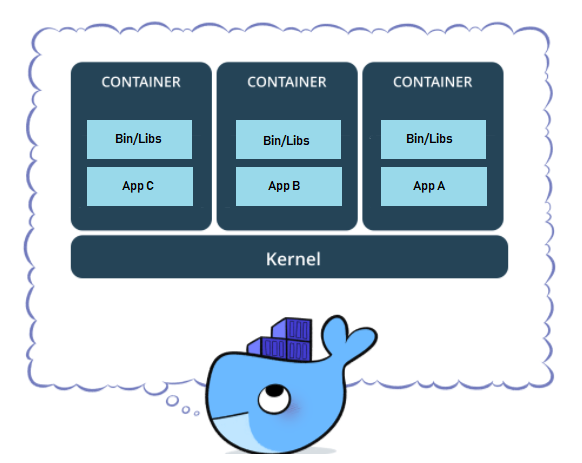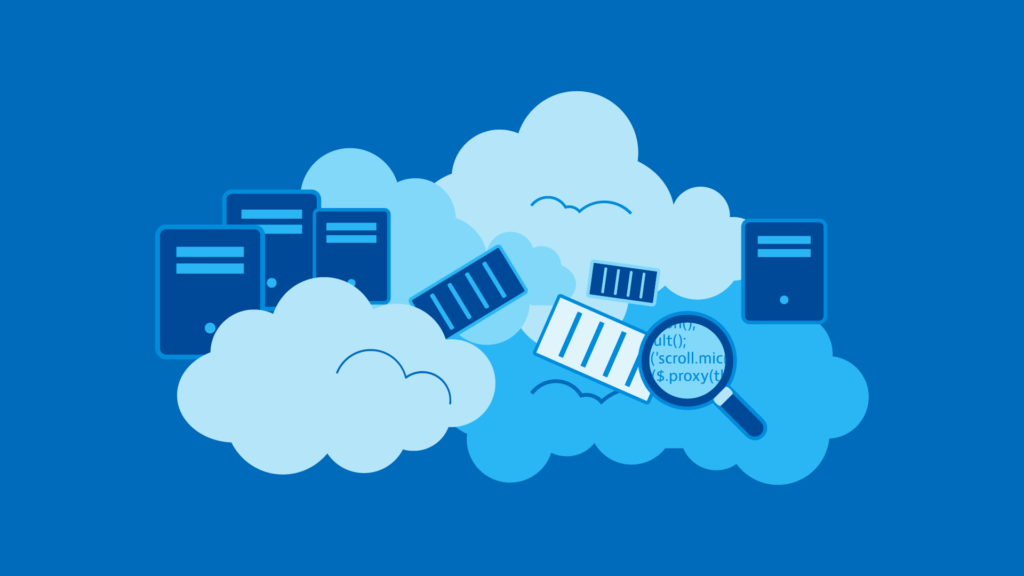
An Overview of Containerization and Docker
By Udit Agarwal

Before taking the overview of containerization and Docker, let us understand deeply about Docker. Docker is the containerization platform that fulfills the role of packaging the application and all its dependencies together. Containers ensure seamless application functionality in any environment by packaging and managing dependencies. In another simple language, Docker is a tool specifically designed to make the creation easier, deploy, and run applications using containers.
Various issues are taken under consideration by Docker. They are:
- Docker is not a platform-specific, IDE, or programming language restriction.
- A small image size makes it easier to ship and store.
- No compatibility issues.
- Quick and easy application.
- Isolating applications and resources improves modularity and security.
Docker Architecture
To keep the application self-contained, the Docker approach moves up the abstraction of resources from the hardware level to the Operating System level.
The architecture of Docker defines things better. It can make the utilization of a client-server model and comprises the following components:
- Docker daemon: The Docker daemon is responsible for all container-related actions. The daemon receives commands from CLI or the REST API.
- Docker Client: By the medium of the Docker client, the users can easily interact with Docker. The Docker client can reside on the same host as the daemon or a remote host.
- Docker Objects: The objects are utilized to assemble the application.
- Images: The read-only template is used to build the containers. Images are used to store and ship applications.
- Containers: Containers are encapsulated environments in which applications run. A container is inclusive of image and configuration options. The container is a core container runtime that initiates and supervises the performance of the container.
- Docker Registries: the Docker Registries are locations from where we store and download the images.

What is Containerization?
Containerization is seen as the latest buzzword in cloud computing. As per the belief of many, it can help modernize legacy systems by creating new, scalable cloud-native applications. Now the question arises what the requirement of containerization is?
To better understand the needs and requirements of containerization, let’s start with virtualization utilizing virtual machines (VMs) in the cloud. Every enterprise uses the cloud environment to run VMs with scalability and load-balancing capabilities.
In the concept of the virtualization approach, there is an involvement of various challenges come the way. They are Environment inconsistency, OS dependency, Isolation level, Compute consumption granularity, and patching images in production-grade environments.
What is the working of Containerization?
Containerization grants software developers permission to create and deploy apps faster and more securely. Employing conventional techniques to develop code in a specific computing environment often results in errors and bugs when transferring files.
Containerization helps eliminate the problem of transferability by allowing the bundle of supplication code together with its related configuration files, dependencies, and libraries.
What are the Advantages of Containerization?
The developers can deliver containerized applications to users in a digital workspace. Containerization offers significant advantages to software developers and development teams, ranging from superior agility and portability to better cost controls.

Here are some of the benefits of containerization.
Portability-
An application container creates an executable software package that can be abstracted from the host OS. Containerization is a portable concept that grants permission to run consistently and uniformly across any platform and the cloud. The OS consolidation methods also avoid inconsistencies like integration that seek to obstruct the app functionality.
Speed-
Developers consider containers lightweight. The absence of additional overhead and sharing the host machine’s OS kernel is the cause. Their light feature drives higher server efficiencies and reduces server and licensing costs. It helps increase the speed of start-time as there is no availability of OS to boot.
Using a Docker container, one can create a master version of an application and deploy it quickly. A container environment ensures the availability of high flexibility.
Scalability-
Application container technology offers high scalability. An application container can handle increasing workloads by reconfiguring the existing architecture. It is helpful for the enablement of resources using a service-oriented app design. On the other hand, a developer can add more containers within a cluster of distributed machines.
A container environment accepts the new addition of new functions, updates, and features instantly without affecting original applications.
Efficiency-
Since the software runs in containerized environments, it shares the host machine’s OS kernel. The developers have the authority to share the app layers across containers. Along with this, the containers have an inherently smaller capacity than virtual machines. There is a requirement for minimal startup times so that the developers can run more containers on the same computing capacity. This drives higher server efficiencies and reduces associated server and licensing costs.
Fault Isolation-
Containerizing an application isolates it and allows it to operate independently. Therefore, the failure of a container does not affect the operation. The entire team development can identify and correct the technical issues within a faulty container without causing any downtime in the others. The container engine can leverage the operating system security isolation techniques.
Security-
Isolating applications as containers prevent malicious code from affecting other containerized apps. One can also make the definition of security permissions so that it can automatically block access to unwanted components that seek to enter other containers or restrict communications.
App isolation is such a helpful thing for the developers that it can share additional features without any involvement of the risk factor. For instance, when working with a team of developers, one can share the required resources without critical information within your network.
Ease of Management-
While using a container orchestration platform, Containerization can automate the installation, management, and scaling of containerized workloads and services. You can ease management tasks through container orchestration, such as by making the launch of new app versions, scaling containerized apps, or facilitating the monitoring, logging, and debugging functions.
Continuity-
It is the nature of some of the containers that they run independently. At the time of failure of one, it will not impact the continuity of others. The entire development team gets the flexibility to rectify errors in one container without affecting the other. Therefore, containerization gives assured continuity in operations.
Developer-Friendly-
Containers are developer-friendly as the users can utilize one environment for development and production. The developers, with the help of containerization, can write an app on their Windows laptop, but it fails to run on a Mac workstation.
What is the meaning of Docker Containerization?
The Docker Engine is considered one of the most well-known and used container engine technology globally. Docker is the primary piece in container architecture. It refers to a Linux kernel-based open-source responsible for creating containers in an OS.
When a Docker accesses a single OS kernel, it can manage multiple distributed apps running in their respective containers. The basis for containerization is the software package developers implement in a single virtual shipment.
It is all the role of developers to create containers from Docker images. Docker images belong to read-only status; Docker creates a container by including a read-write file system. It starts a network interface to permit communication between the container and a local host. Further, the inclusion of an IP address executes the indicated process. Each container contains the necessary parts required to run a program.
Containerization vs. Virtualization
Containerization and virtualization enable efficient computation by allowing developers to run multiple software types simultaneously. However, application container technology can deliver substantial benefits over virtualization. It makes them favored tech by IT professionals.
Virtualization allows multiple OS and software apps to run simultaneously and by sharing a single physical computer’s resources. Containerization makes use of computing resources efficiently. A container creates an executable software package that bundles app code with the related configuration files, dependencies, and libraries it needs to run.